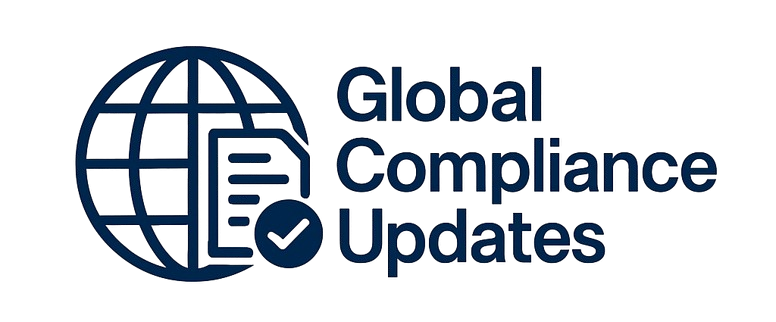Performing a corporate-wide Risk Assessment can seem like a daunting task for an organization. In reality, it can be done using a template and brainstorming with internal auditors, certified fraud examiners and business unit leaders throughout your organization. Understanding your Company’s Risk Environment is key to having an effective Internal Audit organization, it helps to have significant experience in internal auditing and a mind for coming up with “what could go wrong” in any control environment. The corporate-wide Risk assessment can be performed to maximize the efficiency and effectiveness of any organization with a diligent template and process for performing the assessment. This webinar will equip you with a methodology that has been utilized in a robust internal audit department for a Billion dollar revenue Corporation.
WHY SHOULD YOU ATTEND?
- Internal Audit personnel involved in performing the annual Risk Assessment
- Internal Audit Management interested in performing a risk assessment
- Professionals responsible for performing risk assessment duties
- Risk/Compliance Officer any industry
LEARNING OBJECTIVES
- The key components of a Risk Assessment and Management Program
- The template for a risk assessment and examples of typical projects that may come up in various departments
- Brainstorming your industry and the unique types of projects that can be worthwhile projects
- The methodology for a successful Risk Assessment process
- The steps involved in the Risk Assessment process
- Continual refinement of audit projects throughout the Audit Year
WHO WILL BENEFIT?
- Beginning Internal Auditors
- Compliance Professionals
- Operational Risk professionals
- Finance Professionals
- Board Members
- Internal Auditors
- External Auditors
- Audit Committee Members
- Operational Risk Managers
- Departmental Managers
- Internal Audit personnel involved in performing the annual Risk Assessment
- Internal Audit Management interested in performing a risk assessment
- Professionals responsible for performing risk assessment duties
- Risk/Compliance Officer any industry
- The key components of a Risk Assessment and Management Program
- The template for a risk assessment and examples of typical projects that may come up in various departments
- Brainstorming your industry and the unique types of projects that can be worthwhile projects
- The methodology for a successful Risk Assessment process
- The steps involved in the Risk Assessment process
- Continual refinement of audit projects throughout the Audit Year
- Beginning Internal Auditors
- Compliance Professionals
- Operational Risk professionals
- Finance Professionals
- Board Members
- Internal Auditors
- External Auditors
- Audit Committee Members
- Operational Risk Managers
- Departmental Managers
Speaker Profile
 Dr. Robert E. Davis
Dr. Robert E. Davis
Dr. Robert E. Davis obtained a Bachelor of Business Administration in Accounting and Business Law, a Master of Business Administration in Management Information Systems, and a Doctor of Business Administration in Information Systems Management from Temple, West Chester, and Walden University; respectively. Moreover, during his twenty years of involvement in education, Dr. Davis acquired Postgraduate and Professional Technical licenses in Computer Science and Computer Systems Technology. Dr. Davis also obtained the Certified Information Systems Auditor (CISA) certificate — after passing the 1988 Information Systems Audit and Control Association’s rigorous three hundred and fifty multiple-choice questions examination; and was conferred the …
Upcoming Webinars

ChatGPT and Project Management: Leveraging AI for Project M…

Workplace Investigations 101: How to Conduct your Investiga…

Project Management for administrative professionals

The Monte Carlo Simulations in Excel for Risky Investments

Onboarding is NOT Orientation - How to Improve the New Empl…

Dealing With Difficult People: At Work & In Life

Transform Data into Insights: A Beginners Guide to Excel Pi…

Construction Lending And Real Credit Administration: Evalua…

Understanding Accounting for non - Accounting professionals

Harassment, Bullying, Gossip, Confrontational and Disruptiv…

New Form 1099 Reporting Requirements: 2025 Compliance Update

Human Error Reduction Techniques for Floor Supervisors

HR Metrics and Analytics 2025 - Update on Strategic Plannin…

Treating Employees Like Adults: Discipline versus Empowerme…

7 Ways To Beat Burnout: Without Quitting Your Job


How to Write Procedures to Avoid Human Errors

Handbook Overhaul 2026: Compliance, OBBB Act & Beyond

FDA Proposes Framework to Advance Credibility of AI Models

Ethical Terminations: Navigating Employee Exits with Legal …

Understanding EBITDA – Definition, Formula & Calculation

Project Management for Non-Project Managers - Scheduling yo…

4-Hour Virtual Seminar on Hidden Secrets of Selling & Marke…

Validation Statistics for Non-Statisticians

Data Integrity and Privacy: Compliance with 21 CFR Part 11,…


The Alphabet Soup: When the FMLA, ADA, COBRA, and Workers' …

Talent Management: How to Leverage AI and ChatGPT Tools for…


Offboarding with Care: Conducting Legal & Ethical Employee …

2-Hour Virtual Seminar on How to Conduct an Internal Harass…

Payments Fraud Detect & Prevent Check, ACH and P-Card Schem…

Managing Toxic & Other Employees Who have Attitude Issues



Reduce Stress in the Workplace: Effective Ways to Handle Co…





Excel - Pivot Tables - The Key To Modern Data Analysis and …
